This was built in 1831, for Edmund Peel, as a summer residence and to provide stabling for his racehorses. The stables have since been demolished. This historic building was originally known as Hedgford Lodge. White’s Gazetteer and Directory for Staffordshire, of 1834, describes it as ‘a handsome mansion called Hedgford Lodge’. Hednesford was then a rural hamlet recorded on maps and in directories as Hedgford.
Text about the Marquess of Anglesey and the Battle of Waterloo.
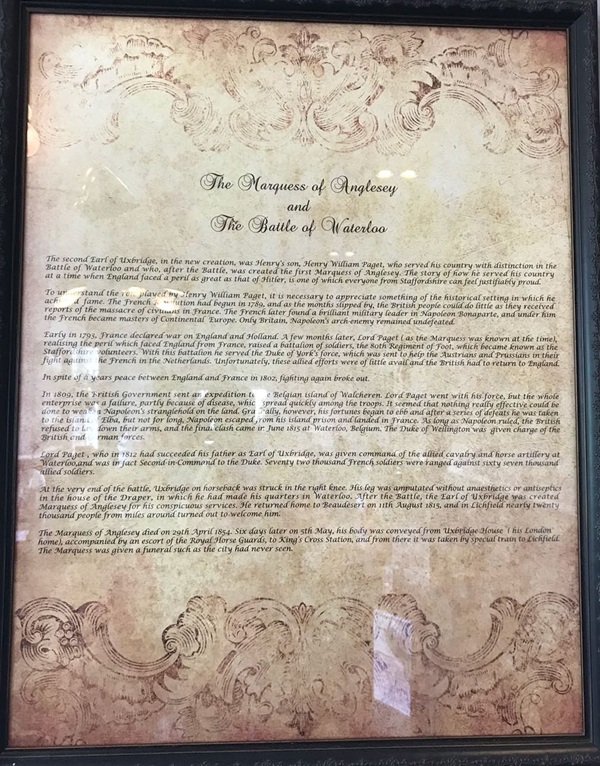
The text reads: The second Earl of Uxbridge, in the new creation, was Henry’s son, Henry Paget, who served his country with distinction in the Battle of Waterloo and who, after the battle, was created the first Marquees of Anglesey. The story of how he served his country at a time when England faced a peril as great as that of Hitler, is one of which everyone from Staffordshire can feel justifiably proud.
To understand the role played by Henry William Paget, it is necessary to appreciate something of the historical setting in which he achieved fame. The French Revolution had begun in 1789, and as the months slipped by, the British people could do little as they received reports of the massacre of civilians in France. The French later found a brilliant military leader in Napoleon Bonaparte and under the French became masters of Continental Europe. Only Britain, Napoleon’s arch-enemy remained undefeated.
Early in 1793, France declared war on England and Holland. A few months later, Lord Paget (as the Marquees was known at the time), realising the peril which faced England from France raised a battalion of soldiers, the 80th Regiment of Foot, which became known as the Staffordshire volunteers. With this battalion he served the Duke of York’s force, which was sent to help the Austrians and Prussians in their fight against the French in the Netherlands. Unfortunately, these allied efforts were of little avail and the British had to return to England.
In spite of a year’s peace between England and France in 1802, fighting again broke out.
In 1809, the British government sent an expedition to the Belgian island of Walcheren. Lord Paget went with his force, but the whole enterprise was a failure, partly because of disease, which spread quickly among the troops. It seemed that nothing really effective could be done to weaken Napoleon’s stranglehold on the land. Gradually, however, his fortunes began to ebb and after a series of defeats he was taken to the island Elba, but not for long, Napoleon escaped from his island prison and landed in France. As long Napoleon ruled, the British refused to lay down their arms, and the final clash came in June 1815 at Waterloo, Belgium. The Duke of Wellington was given charge of the British and German forces.
Lord Paget, who in 1812 had succeeded his father as Earl of Uxbridge, was given command of the allied cavalry and horse artillery at Waterloo and was in fact second-in-command to the Duke. Seventy two thousand French soldiers were ranged against sixty seven thousand allied soldiers.
At the very end of the battle, Uxbridge on horseback was struck in the right knee. His leg was amputated without anaesthetic or antiseptics in the house of the Draper, in which he had made his quarters in Waterloo. After the battle, the Earl of Uxbridge was created Marquees of Anglesey for his conspicuous services. He returned home to Beaudesert on 11 August 1815, and in Litchfield nearly twenty thousand people from miles around turned out to welcome him.
The Marquees of Anglesey died on 29 April 1854. Six days later on 5 May, his body was conveyed from Uxbridge House (his London home), accompanied by an escort of the Royal Horse Guards, to King’s Cross Station, and from there it was taken by special train to Lichfield. The Marquees was given a funeral such as the city had never seen.
A painting of The Marquess of Anglesey.
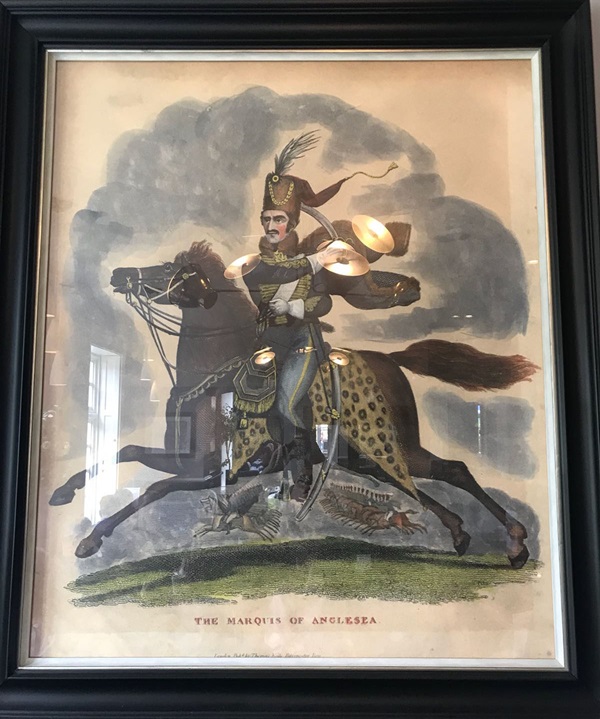
A photograph and text about horse training.
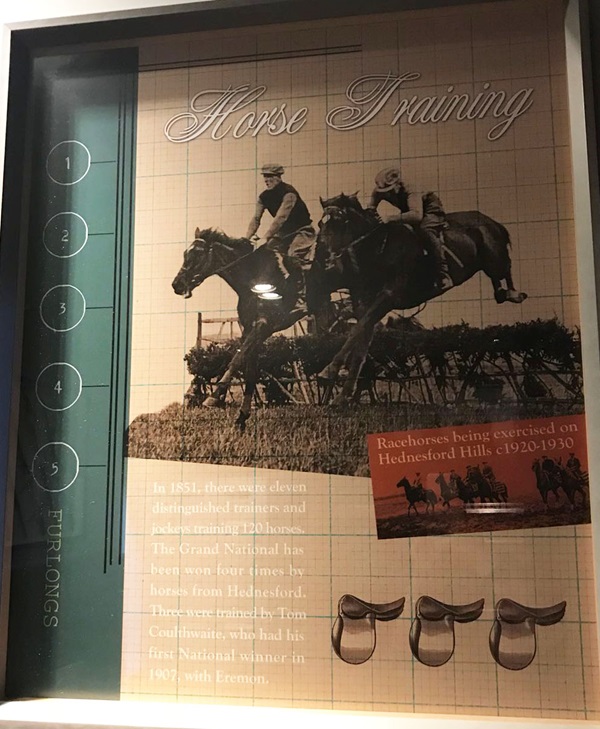
The text reads: In 1851, there were eleven distinguished trainers and jockeys training 120 horses. The Grand National has been won four times by horses from Hendnesford. There were trained by Tom Coulthwaite, who had his first National winner in 1907, with Eremon.
A print of Cannock Chase.
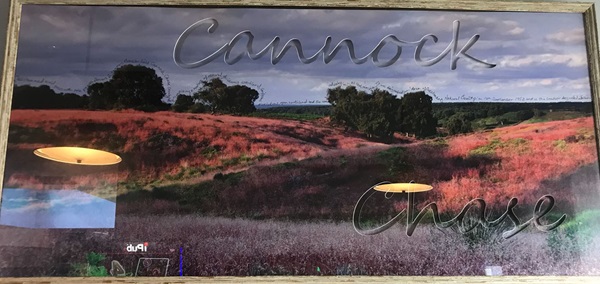
A sculpture entitled Hednesford Jockey.
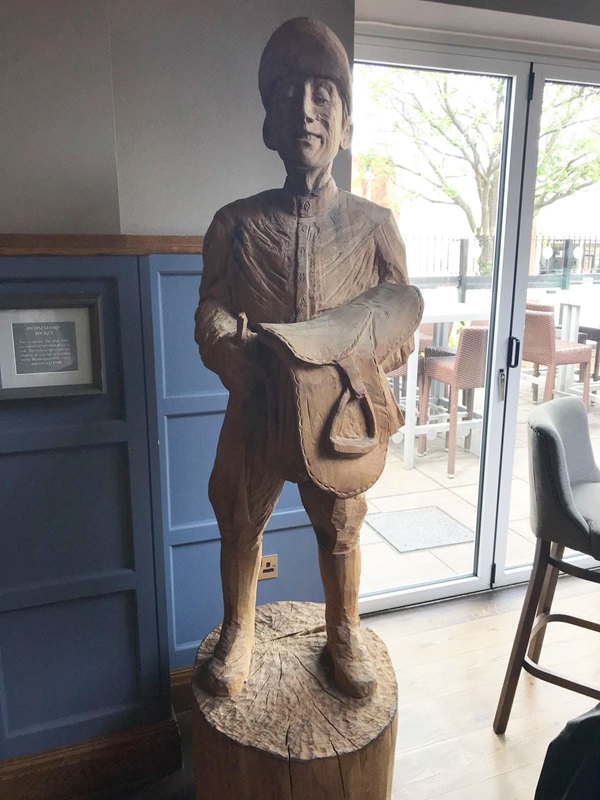
The sculpture has been hand carved out of one solid piece of oak. The jockey represents the history of race horse training on the Hendnesford Hills which dates back to 1760.
External photograph of the building – main entrance.
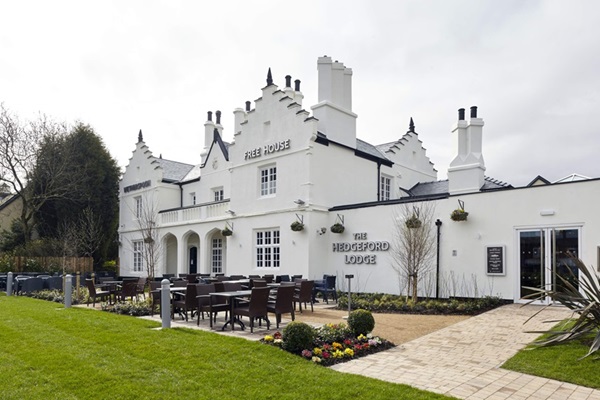
If you have information on the history of this pub, then we’d like you to share it with us. Please e-mail all information to: pubhistories@jdwetherspoon.co.uk